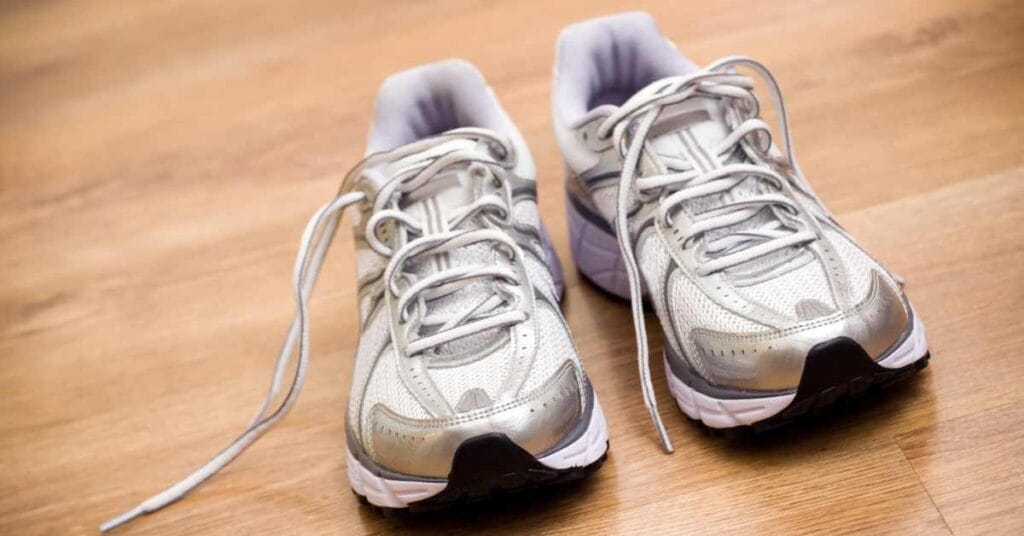How Long Do Workout Shoes for Women Last? A Complete Guide

Workout shoes are a vital part of any fitness routine, providing the support, cushioning, and stability needed for optimal performance. However, like any gear, they don’t last forever. Over time, their structure degrades, potentially impacting your comfort and even increasing the risk of injuries. So, how long do workout shoes for women last? In this guide, we’ll examine the average lifespan of workout shoes, the factors that affect their durability, the signs they need replacement, and tips to help them last longer.
How Long Do Workout Shoes Last?
The lifespan of workout shoes depends on several factors, including the type of activity, frequency of use, and overall shoe quality. On average:
- Running Shoes typically last 300–500 miles, which translates to about 6–12 months of regular use.
- Cross-Training Shoes last about 6–9 months with moderate use, though intense workouts like HIIT may reduce their longevity.
- Weightlifting Shoes can last up to 2 years since they endure less wear and tear than running shoes.
- Walking Shoes are durable for 500–750 miles or around 9–12 months of consistent wear.
These guidelines are approximate, and individual factors like workout intensity and personal mechanics can influence how long a pair of shoes will last.
What Determines How Long Your Workout Shoes Last?
Several factors play a role in how quickly workout shoes wear out:
- Activity Type: High-impact activities like running or HIIT cause faster wear on shoes compared to low-impact workouts like yoga or weightlifting.
- Frequency of Use: Daily use naturally shortens a shoe’s lifespan, whereas occasional use extends it.
- Shoe Quality: Shoes made by reputable brands with high-quality materials and construction tend to last longer.
- Body Weight and Mechanics: Heavier individuals or those with unique gait patterns may notice quicker wear on their shoes.
- Surface Type: Shoes used outdoors on rough or uneven terrain wear out faster than those used on smooth indoor surfaces.
By understanding these factors, you can better anticipate how long your shoes might last and adjust your usage to prolong their lifespan.
How to Tell If Your Workout Shoes Are Worn Out
Knowing when to replace workout shoes is crucial for avoiding discomfort and injury. Here are some common signs that your shoes may be past their prime:
- Reduced Cushioning: If your shoes feel flat or less comfortable, it may indicate that the midsole cushioning is no longer effective.
- Visible Wear on the Outsole: Check the bottom of your shoes. Worn tread patterns can reduce traction and stability.
- Uneven Wear Patterns: Uneven soles can compromise support, leading to imbalances and discomfort.
- Lack of Support: If your shoes feel loose or no longer hug your feet properly, their structure may have degraded.
- Pain or Discomfort: Persistent aches in your feet, knees, or back during or after workouts can signal that your shoes need replacing.
Ignoring these signs can negatively impact your workout performance and potentially lead to injuries, so it’s essential to pay attention to how your shoes feel and look.
How to Make Your Workout Shoes Last Longer
To maximize the lifespan of your workout shoes, consider adopting the following practices:
- Rotate Your Shoes: Use different pairs for different activities, such as one pair for running and another for gym workouts.
- Wear Them Only for Workouts: Avoid wearing your workout shoes for casual outings to minimize unnecessary wear.
- Store Shoes Properly: Keep them in a cool, dry place away from direct sunlight or moisture to prevent material breakdown.
- Clean Regularly: Wipe off dirt and sweat to maintain the shoes’ appearance and functionality.
- Replace Insoles: Switching out worn insoles for new ones can restore some of the original comfort and support.
- Inspect Regularly: Check for signs of wear on the outsole, midsole, and upper materials to address issues early.
Taking these steps will not only extend the life of your shoes but also ensure they continue to support your fitness journey.
Picking Shoes That Last Longer
Choosing durable workout shoes upfront can save you money and hassle in the long run. When shopping, look for the following:
- High-Quality Materials: Opt for shoes with durable rubber outsoles, reinforced stitching, and robust midsoles for longevity.
- Activity-Specific Design: Select shoes designed for your primary activity. Running shoes differ from cross-trainers or weightlifting shoes for a reason.
- Trusted Brands: Reputable brands like Nike, Adidas, ASICS, and Reebok are known for producing reliable, long-lasting footwear.
- Proper Fit: Shoes that fit well are less likely to experience premature wear since they reduce stress on the materials.
Investing in the right pair of shoes tailored to your needs can make a significant difference in both performance and durability.
FAQs About Workout Shoes’ Lifespan
Q: Can I use the same workout shoes for all activities?
A: While possible, it’s not ideal. Different activities require specific support and cushioning, and using one pair for everything can lead to uneven wear and reduced performance.
Q: Do expensive workout shoes last longer?
A: Often, yes. Higher-quality shoes typically use better materials and construction, which contribute to increased durability.
Q: What happens if I keep using worn-out workout shoes?
A: Worn-out shoes can lead to discomfort, reduced performance, and a higher risk of injuries like sprains, shin splints, or joint pain.
Conclusion
Workout shoes for women play a crucial role in maintaining comfort and preventing injuries during exercise. While their lifespan varies based on activity type, frequency of use, and quality, recognizing the signs of wear and following tips to extend their durability can ensure you get the most out of your investment. When it’s time to replace your shoes, don’t ignore the signs—your feet deserve the best support for every step of your fitness journey.







